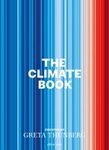![The Biogeochemistry of Global Change The Biogeochemistry of Global Change]()
Click to have a closer look
About this book
Contents
Customer reviews
Related titles
About this book
Certain trace gases in the atmosphere are able to absorb electromagnetic energy from the reflection of solar radiation from the Earth's surface. These gases have been increasing steadily and there is concern that they will change global climatic conditions by warming the atmosphere - the so-called "greenhouse effect". Many of these gases originate from biological systems. This work discusses the role of radiative trace gases in this process. The disciplines covered in the book include microbiology, geochemistry, atmospheric chemistry, plant physiology, oceanography and limnology, and soil science. This diversity allows for cross-fertilization, achieving a better understanding of the complex mechanisms for biological and chemical formation, the destruction of trace gases, and the manipulation of ecosystems.
Contents
Paleoatmospheres and climates: Biogeochemical cycles of carbon on a hierarchy of time scales-J. Walker; Ice core records as a key to understanding the history of atmospheric trace gases-D. Raynaud; Ancient ice air content of the vostok ice core-I. Semiletov; Late jurassic paleoclimate of pangea based on results from general circulation model-G. Moore, D. Hayashida, C. Ross, and S. Jacobson; Distributions, reactions, sources, and sinks: The sensitivity of the global atmosphere to anthropogenic methane sources-N. Andronova and I. Karol; A time-dependent two dimensional-Model study of the trend in atmospheric methane-S. Fan, J. Rodriguez, M. Ko, and N. Sze; The influence of tropical biomass burning on climate and the atmospheric environment-M. Andreae; Long-term Effects of fossil-fuel-burning and deforestation on levels of atmospheric CO2-J. Kasting and J. Walker; Models of oceanic and terrestrial sinks of anthropogenic CO2: A review of the contemporary carbon cycle-I. Fung; Terrestrial systems Agriculture, the global nitrogen cycle, and trace gas flux-P. Vitousek and P. Matson; Sulfur gas emissions from African savanna-burning-B. Nguyen, N. Mihalopoulos, B. Bonsang, J. Putaud, and J. Lacaux; Methane production and uptake in some terrestrial ecosystems of the former USSR-N. Panikov, A. Belyaev, A. Semenov, and V. Zelenev; Emission of N-oxides from acid irrigated and limed soils of a coniferous forest in Bavaria-H. Papen, B. Hellmann, H. Papke, and H. Rennenberg; Production of methane and nitrous oxide by organic soils within a northern hardwood forest ecosystem-J.Yavitt and T.Fahey; Effect of nitrogen fertilizer and nitrification inhibitors on methane and nitrous o6xide fluxes in irrigated corn-K.Bronson; Nitric and nitrous oxide evolution from managed subtropical grassland-G.L. Hutchinson; Mechanisms controlling methane emission from wetland rice fields-R.Conrad; Mechanism of methane transport by rice plants-I.Nouchi and S.Mariko; Spatial and temporal variations of methane flux from a rice paddy field-K.Yagi and K.Minami; soil water content and the ratio of nitrous oxide to nitric oxide emitted from soil-E.Davidson; Respiration of cultivated histosols in field and laboratory measurements and the relationships between respiration and soil properties-T.Hokkanen and J.Silvola; Emission of biogenic sulfur gases from rice paddies in Japan-K.Minami, K.Kanda, and H.Tsuruta Emissions of ammonia, nitrous oxide, and methane from cattle Slurry-O.Oenema, G.Velthof, and D.Bussink; Sources and migration of methane-rich gas in sedimentary rocks of the Exmouth plateau: Northwest Australian continental margin-P.Meyers and L.Snowdon; Boreal Systems: Methane emissions from northern high-latitude wetlands-R.Harriss, K.Bartlett, S.Frolking,and P.Crill; Studies of permafrost and gas-hydrates as possible sources of atmospheric methane at high latitudes-K.
Customer Reviews



































